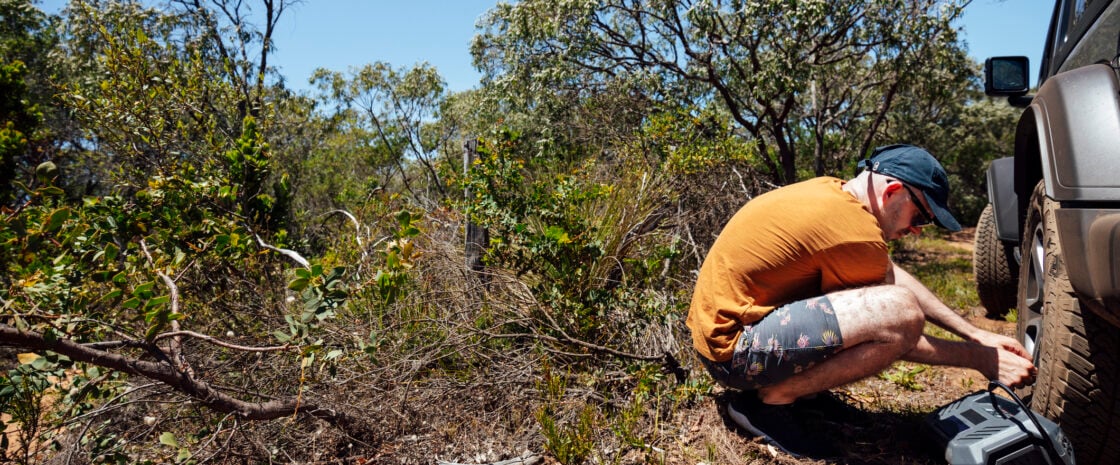Jump to
- Can you use a credit card as an emergency fund?
- Risks of using a credit card for an emergency
- Risk #1: Costly interest charges
- Risk #2: Accumulating unpaid debt
- Risk #3: Exceeding your credit limit
- Risk #4: Damaging your credit score
- When credit cards are good for emergencies
- Choosing the right credit card for an emergency
- Alternatives
An abrupt financial hit, like reduced working hours, combined with rising living costs, can be overwhelming. Strategic credit card use could help you navigate an emergency, like a sudden expense that you can’t easily afford.
To be sure, credit cards come with their costs, risks and limitations. However, the whole point of having access to credit is that you can tap it when you need it, and practising good credit habits in good times means you’ll have flexibility when a financial emergency strikes and you’re faced with an unexpected cost.
Can you use a credit card as an emergency fund?
Credit cards can be a temporary solution during short-term financial crises, though they aren’t a substitute for an emergency fund. An emergency fund is a safety net meant to get you through difficult financial times. It’s often a dedicated savings account for unexpected expenses like medical bills or job loss.
However, not everyone has been able to stash money in a high-interest savings account, and when disaster strikes, it’s often too late to start. And, in reality, expenses continue to pile up whether you have savings or not.
So, you may have to lean on your credit card if you need money to bridge a gap and help you get through a one-off financial emergency.
A credit card isn’t suitable for severe, life-threatening emergencies and long-term financial difficulties. Seek professional help with free financial counselling and find support at the organisations below:
- Moneysmart: an information hub offering general financial information, hardship resources and contact details for legal and financial counselling services.
- National Debt Helpline: a place to organise free consultations with financial counsellors, find helpful guides and learn about debt solutions.
- Way Forward: get free assistance when you’re experiencing financial hardship.
- Beyond Blue: a safe space to seek mental health support or chat to a counsellor.
Risks of using a credit card for an emergency
Using a credit card as an emergency fund comes with considerable risk.
Risk #1: Costly interest charges
Credit card interest rates often exceed 20% or more. Failing to repay your balance by the due date can quickly run up a large debt, often costing more than the emergency itself.
However, it’s worth remembering that the interest rate on credit card purchases is much lower than what you’d find on a payday loan. It’s also generally less than a credit card cash advance, which is an expensive way to get instant access to money.
If you’ve been paying your credit card in full up to now, you could buy more time using your card’s interest-free period. However, these periods are limited — they apply only to purchases, not balance transfers or cash advances. And they’re generally only available when you repay your entire statement balance.
Also consider:
If you have good credit, getting a no-interest card or one with a 0% interest on purchases can provide a temporary financial cushion. You may get a year or more to pay off your balance before interest kicks in.
Risk #2: Accumulating unpaid debt
You may eventually be able to pay off your emergency with a credit card. Still, it means accumulating high-interest credit card debt, putting you in a more precarious financial situation.
Paying the minimum each month can help avoid defaults and late fees, though it prolongs debt. However, this might be necessary during an emergency. You can focus on attacking the debt more vigorously once the crisis passes.
If you’re already feeling the squeeze from credit card debt, adding more might not be an option. Seeing if you qualify for financial hardship through your credit card issuer or bank may be better. If you don’t qualify, you may be able to negotiate your repayment terms, ask for a temporary break on your interest rate or the option to delay your payment.
If you can’t reach an agreement, apply to have your credit card issuer’s decision reviewed by the Australian Financial Complaints Authority.
Also consider:
If you need more time, you could try moving any existing high-interest credit card debt to a card with a 0% balance transfer offer. Just be aware that balance transfers also come with fees, rules about what you can transfer and other requirements. Make sure you understand the fine print before making a move.
Risk #3: Exceeding your credit limit
Credit cards have credit limits, which indicate the maximum amount you can spend before you incur a fee. Depending on the crisis you face, you may not be able to cover the entire cost of an emergency within your credit card’s limit.
If you’re worried about going over your credit limit, there are things you can do to prevent this from happening. For example, you may be able to:
- Set spending controls or temporarily lock your card to prevent future transactions.
- Read your credit card statements and check your balance daily to know when automatic payments are coming out.
- Sign up for alerts to keep your limit in check, as most banks offer SMS or email balance reminders.
Also consider:
If you have good credit but anticipate that income disruption could be in your future, consider expanding your available credit to gain flexibility. You could apply for a new credit card or seek a credit limit increase on your current card.
Risk #4: Damaging your credit score
Unpaid debt is not just expensive. It can also negatively impact your credit score.
However, your credit score isn’t a trophy. It’s a tool. In an emergency, you shouldn’t prioritise your credit score over your essential needs or being safe.
Also consider:
Building and maintaining a healthy credit history is a great way to achieve your financial goals, but a good credit score is only a means to an end — having access to credit when you need it. If you can’t tap your credit in bad times, if you can’t benefit from all the work you put in to establish good credit, then that good credit score doesn’t carry much value.
When credit cards are good for emergencies
Emergencies will differ depending on your own personal and financial circumstances, but a credit card may be a viable option for one-off costs such as:
- Unexpected medical costs: If you or a family member have been involved in an accident or have an emergency health issue, paying with a credit card may be an option.
- Vehicle repairs: Should your car break down or require a quick repair, and you cannot live day to day without it, paying with a credit card may be a short-term solution.
- Home repairs: If your home needs any repairs or you experience a natural disaster and are not covered by insurance, paying for repairs with a credit card may be an option.
- Emergency travel: If you need to travel suddenly due to a family emergency, such as the illness or death of a loved one, a credit card can help cover the one-time expense.
- Loss of an essential item: If you need to replace an essential item that was lost or stolen, a credit card can come in handy. For example, if your laptop breaks and you need it for work or uni.
And when they aren’t
In contrast, using a credit card to pay for ongoing expenses can be risky as you will build up more and more debt, leading to potential long-term interest and fees that could be difficult to keep up with.
Examples include:
- Ongoing financial difficulties: Using a credit card to cover regular costs, such as mortgage repayments or rent, is unsustainable and can lead to financial stress and long-term debt.
- Legal fees: If you face legal fees, using an emergency credit card can be risky as the costs depending on the circumstances.
Choosing the right credit card for an emergency
If you cannot save an emergency fund and decide to use a credit card, having a separate card for emergencies may be beneficial. Focus on choosing the right type of credit card: a low-cost option, not one with unnecessary features and rewards that may not be relevant to a once-off crisis.
It’s also essential to research and compare credit cards, considering interest rates, fees and credit limits.
You may also want to consider whether flexible payment options are available. Many banks offer features like buy now, pay later-type arrangements and the ability to convert your statement balance or a large purchase into interest-free instalments. These tools can make a difference when you’re facing an emergency.
Alternatives
Using a credit card for emergency payments could mean taking on burdensome debt you’ll struggle with further down the track. Consider these options instead:
- Dedicated savings account: Saving money and building a dedicated emergency fund can be a more proactive strategy to deal with a crisis down the road. Setting a monthly savings goal and putting it in a high-interest savings account is a good strategy.
- Insurance policies: Insurance coverage for health, car or home and contents, for example, may offset future costs you might face.
- Personal loan: If you don’t have the money in savings to cover an emergency, taking out a personal loan can help you cover a once-off cost and may come with a lower interest rate than a credit card.
- Crisis payment: If you’re experiencing severe financial hardship, you may be eligible for financial help from the government through a crisis payment.
If you’re in the United States, read a similar version of this article on the NerdWallet US site.
DIVE EVEN DEEPER

Credit Card Fees: What They Are And How To Avoid Them
Credit card fees can vary among providers. Find which charges are inescapable and which ones you can avoid.

How To Calculate Credit Card Interest
Knowing how to calculate credit card interest puts you in a better position to take charge of your interest.

How to Lower Your Bills: 33 Ways to Save Money
Chances are, you can cut costs and keep some cash in your pocket by taking a closer look at your bills.

No Interest Loans (NILs) Explained
The No Interest Loans Scheme allows some Australians to borrow up to $3,000 with an interest-free loan.

